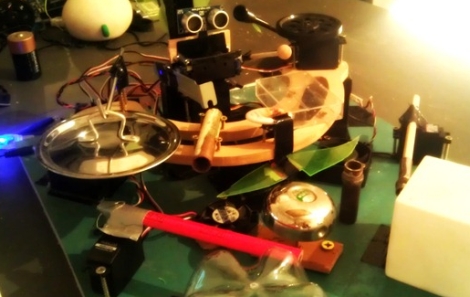
The folks over at Gadget Gangster have been working on a music visualization system using a Parallax Propeller. The visualizations are awesome in their early-90s demoscene way, and of course we love anything using the oft under-appreciated Propeller.
The project is called Video Beats and it generates music visualizations in the style of a blocky but very complex Atari 2600 game. There’s really not much to the build – just two RCA jacks for the audio input and video output along with a couple of resistors – but we do appreciate how nicely this project would fit in at a chiptunes show.
The Gadget Gangster team says the input isn’t limited to just audio – a potentiometer, accelerometer, or even a light sensor can be added to the build for a more dynamic output. After the break, you can see the demo of Video Beats, and a [Family Sohn] music video that used an early version of this circuit.










Recent Comments